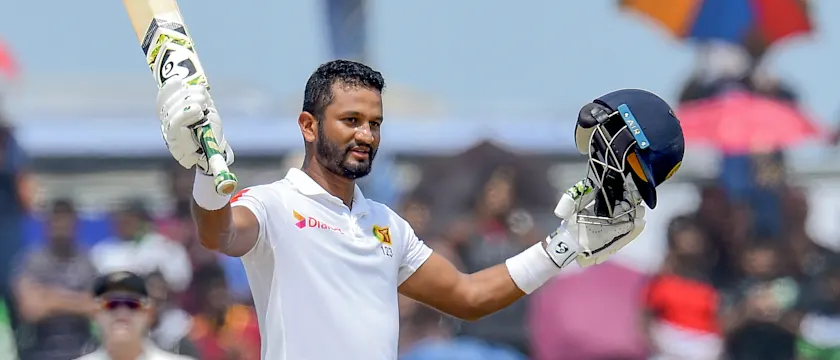'I had that hunger' – Karunaratne cherishes tough hundred

Karunaratne's ninth Test hundred came 11 matches after his previous century. In that period, Karunaratne had eight fifties, so he was relieved to finally get to three figures.
"I had gone through quite a few games without a hundred, and I was telling the team that as well, that I haven't scored a hundred in a while, and that I've got to somehow do it in this game," he said on Sunday, 18 August, after his side's six-wicket win.
"I had that hunger. I try to go for those big scores as much as I can. When I get the opportunity, I really push for that. In the South Africa, New Zealand and Australia tours I couldn't quite get there, though I came close a few times. So when I got a chance here, in Sri Lanka, I made it happen.
🇱🇰 get 60 points and move to the top of the ICC World Test Championship table after securing a record six-wicket win over 🇳🇿 at Galle.#SLvNZ REPORT 👇 https://t.co/1UrubLhPwn
— ICC (@ICC) August 18, 2019
"That's a great source of confidence for me, to hit a hundred on a tough wicket like this."
Where no team had successfully chased more than 99 at the ground, Sri Lanka had been set 268. Unperturbed, openers Karunaratne and Lahiru Thirimanne quickly put the hosts ahead with a 161-run stand for the first wicket. The captain said they had wanted to approach the chase with a positive mindset.
"We were watching the batsmen that did make runs, and we noted how they went about it. After the ball became a bit softer it became easier to bat, and then it was a case of using your feet to the spinners," he explained. "We knew that whoever got a start needed to go big. Both myself and Thirimanne were able to do that ... We set ourselves little targets and broke the chase down."
Hailing a "fantastic" hundred from his Sri Lankan counterpart, Kane Williamson, the New Zealand captain, said the Galle surface didn't give the spinners as much turn as expected. "We thought the wicket would deteriorate more than it did," he said.

"It perhaps got slower. It wasn't turning a huge amount out of the rough. It didn't get more difficult to bat on. I think there was a little bit more bounce and the turn was a little bit quicker in the first innings. Though, saying that, it was a good batting surface as well.
"I thought our bowlers operated patiently for a long period of time. We probably even bowled better in the second innings, but without the edges going to hand, and those sorts of things, [breakthroughs were difficult]," he added.